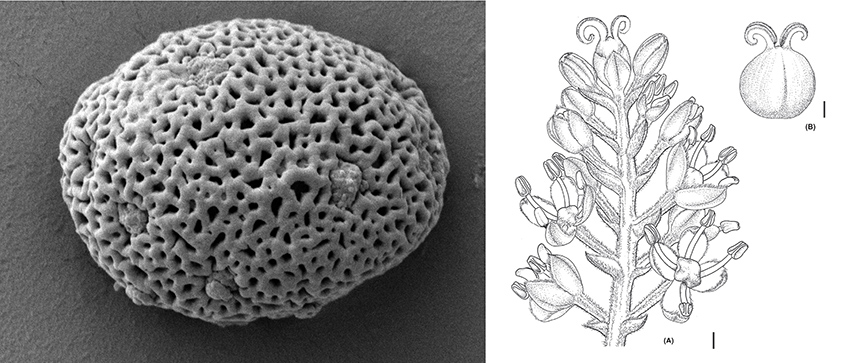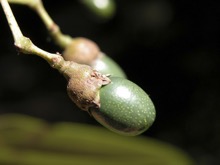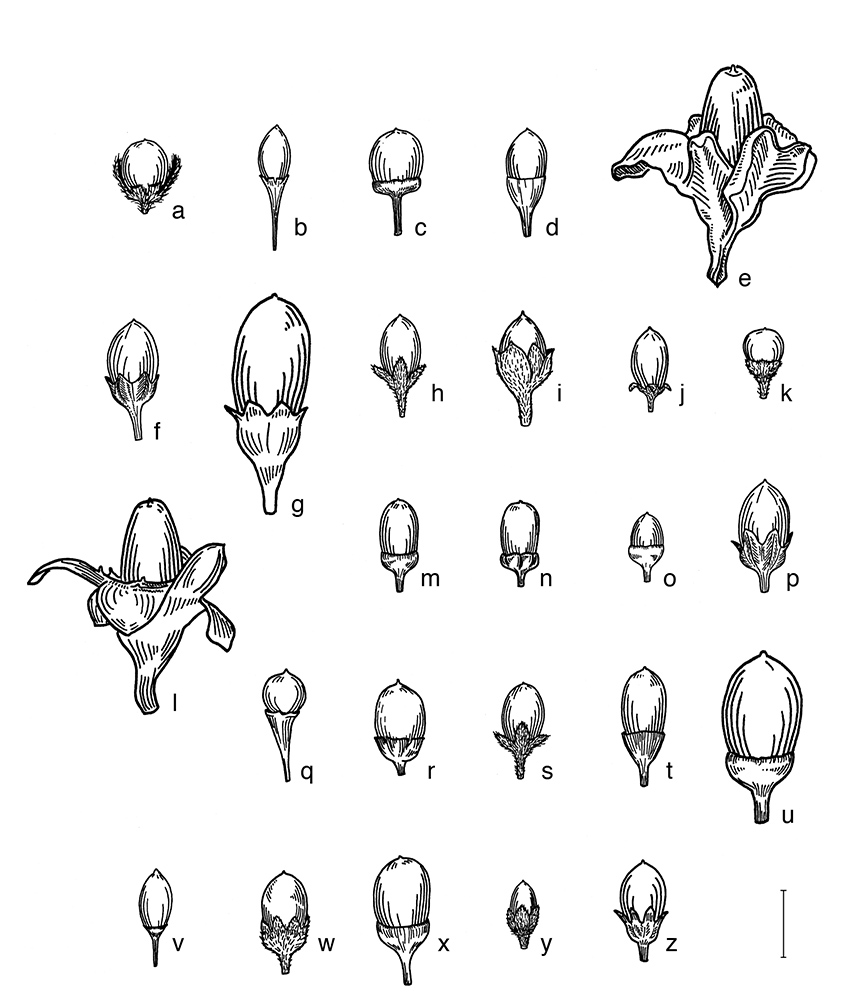The Boxwood family, Buxaceae, consists of six genera and about 100 species worldwide from the Northern to Southern Hemisphere. The group presence is small in Thailand with only two genera and five native species (Soh and Parnell 2018). However, in the course of the taxonomic revision for the Flora of Thailand, a new peculiar species was discovered: the species is similar to Sarcococca in having a bicarpellate ovary but is also similar to Buxus in having a single terminal female flower, laterally inserted male flowers and decussate leaves. To determine the generic identity and to check for hybridisation of this undetermined species, evidence from morphology, pollen and DNA were gathered. Based on the three foregoing evidence, this peculiar species was confirmed to be Buxus and it was named Buxus sirindhorniana to honour Her Royal Highness Princess Maha Chakri Sirindhorn of Thailand, who is a strong advocate for the preservation of biodiversity in the country (Soh et al. 2014).
 Figure 1. Pollen (left) and inflorescence and fruit (right) of Buxus sirindhorniana.
Figure 1. Pollen (left) and inflorescence and fruit (right) of Buxus sirindhorniana.
The genus Cinnamomum from the laurel family (Lauraceae) contains over 300 species in the tropical and subtropical regions. The genus is easily recognisable by their triple venations and fragrant leaves, and dark green fruit seated on a cup. At least 26 species of Cinnamomum are recognised in Borneo of which a staggering 17 species are endemic to the island. The domesticated and wild cinnamon species are valued for their essential oil found in their leaves, barks and roots. The chemical compounds in Cinnamomum essential-oils are commercially important in the food, perfumery, pharmaceutical and chemical industries. Currently, we only use less than 10% of known cinnamon species. Despite their valuable application, confusion on the species identification is common and little is known about their ecology and conservation status. In this study, the nomenclature, description, distribution, ecology, vernacular names and uses of Bornean Cinnamomum were given (Soh 2011). Details of funding and collaborator can be found in the listed publications.
 Figure 2. Fruit of Cinnamomum iners Bl.
Figure 2. Fruit of Cinnamomum iners Bl.
 Figure 3. Diversity of Cinnamomum fruit cup — an important character for species identification.
Figure 3. Diversity of Cinnamomum fruit cup — an important character for species identification.
Publications
Soh W.K. & Parnell. J. 2018. Buxaceae. In: Flora of Thailand 14: 9-13 (eds. Chayamarit, K. & Balslev, H). The Forest Herbarium, Bangkok.
Soh W. K., von Sternburg M., Hodkinson T. R. and Parnell J. 2014. Buxus sirindhorniana sp. nov. (Buxaceae), a bicarpellate species from Thailand. Nordic Journal of Botany, 32: 452–458. DOI:10.1111/njb.00314
Soh W.K. 2011. A taxonomic revision of Cinnamomum (Lauraceae) in Borneo. Blumea, 56: 241-264. DOI: 10.3767/000651911X615168
